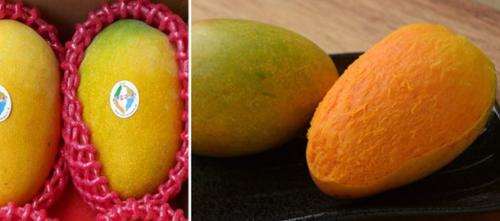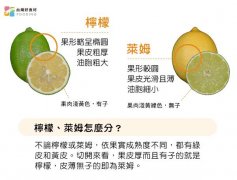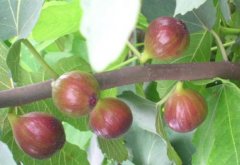New mango varieties: Taiwan summer snow mango characteristics, Taiwan summer snow mango sweetness content
The yellow fruit of summer snow peel is larger, which is obviously different from the common Ai Wen mango on the market.
Kaohsiung Agricultural improvement Farm Research and Development of a new variety of mango "Summer Snow", not only has a strong flavor, but also has the flavor of Taiwan mango, the storage time is also relatively long, and it is highly competitive for export.
Gao Gaochang pointed out that mango is an important fruit tree industry in Taiwan, with a current planting area of about 18000 hectares. the so-called native mango accounts for about 1/3, and the improved mango accounts for 2/3. "Aiwen" is the largest, with an area of about 7500 hectares, followed by "Jinhuang", about 2400 hectares. Aiwen and Jinhuang are the main export sales in Taiwan, but Aiwen is susceptible to disease and Jinhuang is easy to change. Not only the production cost has increased, but also the development of mango industry has been affected.
For this reason, Gao Gaochang actively invested in variety improvement. After years of efforts, a new big fruit strain KMS-83 02 with native mango flavor was selected and named "Summer Snow" this year.
Li Xueru, an assistant researcher at Kaohsiung, said that the experimental data of Xia Xue (Kaohsiung No. 3) performed extremely well. In the Gaoping area, the flowering period is from late December to early February, the fruit ripening period is from May to early July, and the skin of the ripe fruit is yellow. the fruit weighs about 400 to 550 grams, the sugar content is 12 to 15 degrees, and the pulp rate can be as high as 80 percent.
Li Xueru said that the flavor of summer snow is rich, and the storage life of fruits at room temperature can be up to six days, which is conducive to long-distance transportation. The common shortcomings of Aiwen and Jinhuang have been obviously improved and will be officially promoted this year, so that consumers at home and abroad who like to taste mangoes have more new choices.
It is the mango production season. In order to improve Taiwan's mango production technology and provide an exchange platform for fruit growers, Gao Gengchang will hold a mango quality competition on May 16. Farmers are welcome to visit.

- Prev

What is the difference between lime and lemon? What are the characteristics of lime lime?
Lemons, limes, stupid, confused? Imported yellow lemon is "lime", domestic green lemon is "lemon", look at the color discrimination is actually wrong! Lemon and lime fruit according to different maturity, there are green and yellow skin, so can not only look at the skin color
- Next

Why are fresh figs so rare? Can fig butt blossom and peel be eaten?
Figs in the Mediterranean coastal countries in the legend, known as the "sacred fruit", is one of the supplies of sacrifice. It has a high nutritional value, deeply loved by modern people, and the price of figs is relatively expensive. But when you choose to buy and eat, is it not?
Related
- The first cup of black tea in spring, the flavor and history of tea gardens in Kenya, Africa
- The computer can not only choose potatoes, but also grow tea rice. AI will grow winter oolong tea champion.
- It is not only the inflated tea bitten by insects, but also engraved with the four seasons tea in Beipu.
- The Oriental Beauty Tea Festival in Zhuxian County takes the stage at the weekend to experience the plus-size feast of oil tea.
- & quot; Oriental Beauty Tea & Exploration of Emei in Hsinchu, the hometown of quot;
- The new variety of strawberry "Tainong 1" dessert is the first choice with mellow aroma. Crimson gorgeous
- History of Tea in Taiwan: from Wild Inner Mountain to Export Tea Garden
- Two types of Taiwan Oriental Beauty Black Tea won the British three-Star Award for Childhood Tea Xiang Zhang Jiaqi changed from pilot to champion tea maker.
- Banana species and varieties: the planting history of Taiwan Xianren banana and dwarf banana is long, is banana disease resistant?
- Coffee planting Technology: Qianjie Coffee from Seedling to harvesting

